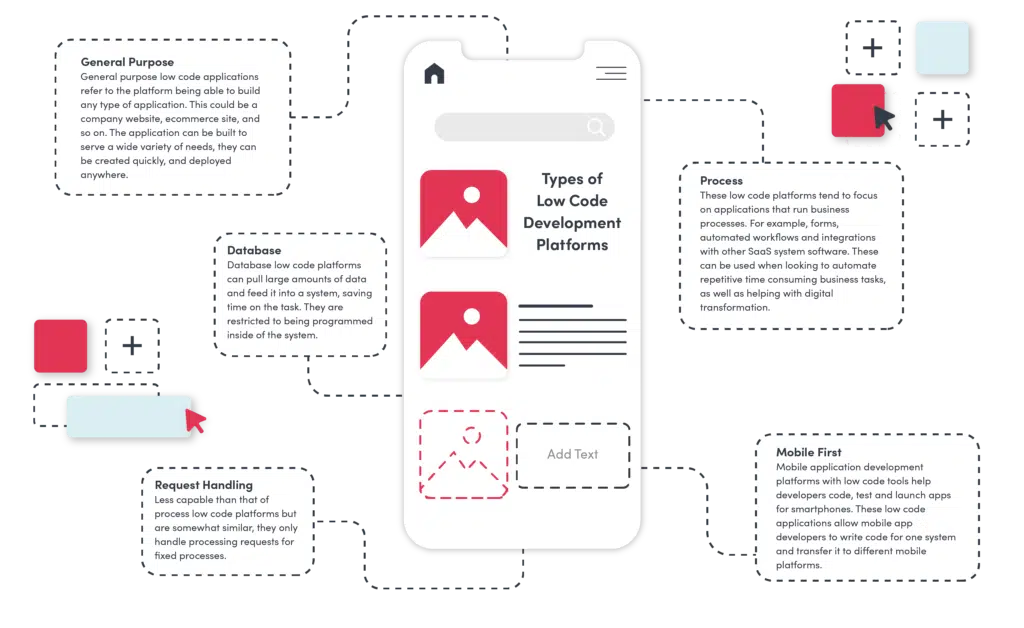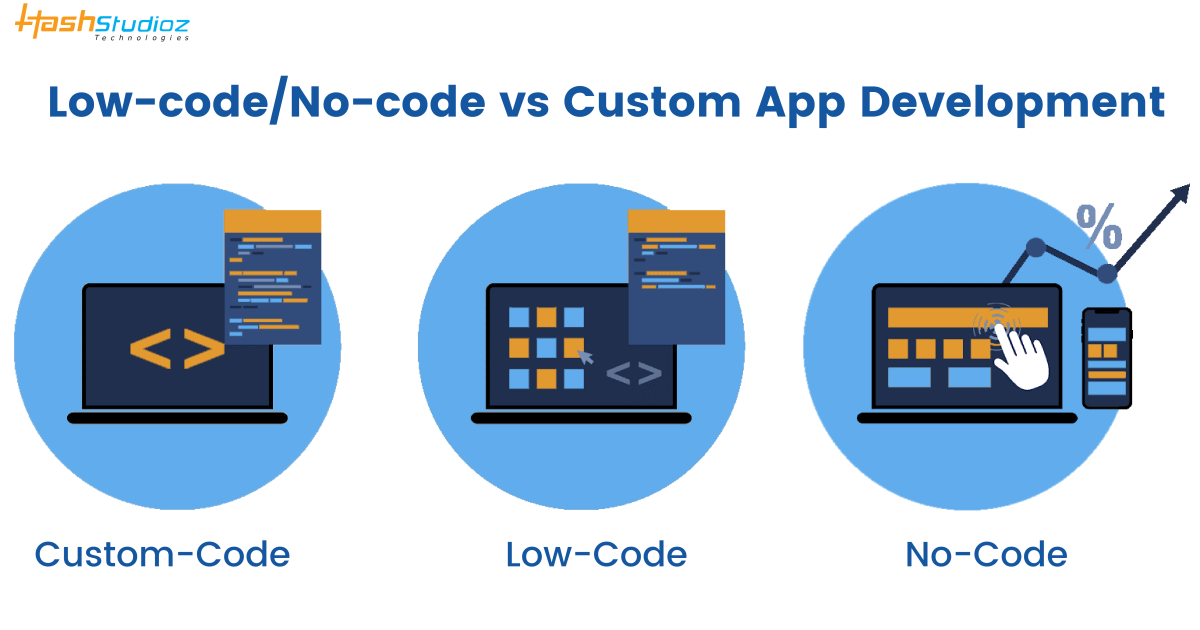Good Suggestions For Deciding On Low-Code Platform Recommendations
Wiki Article
The Advantages Of Low-Code Development For Application Development In Relation To Is Related To Integration Capabilities
Low-code development of apps has numerous benefits, especially in terms integration. This is crucial for creating applications that can effortlessly connect to systems and other services. Here are some of the key advantages: Prebuilt Connectors and APIs
Wide Variety of Connectors Low-code platforms typically come with a library of prebuilt connectors for popular enterprise applications (e.g. CRMs, databases, ERPs, cloud services). This simplifies the process of integration with these systems.
API Integration: A lot of platforms provide out-of-the-box API integration features. Developers can quickly connect to external data and services.
Ease Of Use
Drag-and-Drop Integration: A variety of integration tasks can be accomplished using drag-and drop interfaces. This allows developers and non-developers to design complex integrations with little or no programming.
Visual Workflow Designers: These tools aid you in understanding and configuring integrations with greater ease.
Standardized Integration Methods:
SOAP & RESTful Services The support for web service standards like SOAP and REST allows easy integration with many external systems.
OData Standards: OData standards allow for the easy manipulation and retrieval of data across different platforms and apps.
Real-Time Data Synchronization:
Real-time Integrations: Low-code devices are able to handle real-time data synchronization between apps and systems, ensuring that the data is always current and uniform across the entire organization.
Event-Driven Architect: Certain platforms come with event-driven structures, which allow applications to react instantly to any event. This is essential for dynamic interactive applications.
Legacy System Integration:
Connecting old and new Systems: Low-code platforms often offer tools for integrating with existing systems, allowing companies to upgrade their IT infrastructure without radically overhauling existing systems.
Data Migration Tool: Built-in data migration tools permit data to be transferred from older systems to new software which are built on low-code platforms.
Third-Party Service Integration:
Integration with Cloud Services: Seamless integration with cloud-based services like AWS, Azure, and Google Cloud allows for the ease of deployment and scaling applications.
Business Applications Integration: Low-code platforms are able to integrate with various business applications, such as Salesforce, SAP, Microsoft Dynamics, etc. to create a seamless workflow across different business functions.
Simplified Data Processing:
Data models that are unifying: A few platforms that offer low-code support for unified data models to simplify data management across platforms.
Data Connectors are pre-configured data connectors which provide quick access to sources of data and permit manipulation.
Security and Compliance:
Secure Integrations - Low-code platforms have been designed to ensure that all integrations conform to the security protocols and standards. This ensures the security of the data in transit as well as when it is stored.
Security Features: These platforms often include features which make sure that integrations comply with regulations, for example GDPR or HIPAA. This provides peace ofmind for businesses handling sensitive information.
Extensibility:
Custom Code and Scripts: For more complex integration needs, low-code platforms often allow the inclusion of custom code and scripts, providing flexibility without compromising ease of use.
Plug-in Ecosystem An ecosystem of extensions and plugins can extend integration capabilities through allowing users to create new features as needed.
The overall low-code platform's capabilities to integrate can be a very effective tool to create interconnected applications which are scalable and efficient. They allow you to connect different platforms. They also enhance the flow of data. Read the best Low-code Platform for application development for blog recommendations including application development platforms, develop web app, paas service, rapid applications, ms azure sql, application modernization software, azure sql, mobile development platforms, develop web app, no code platforms and more.

Benefits Of Low-Code Applications In Safety And Governance
Low-code design of applications offers a variety of advantages when it comes to governance and security. Both are vital to making sure that apps remain compliant, secure and well-managed throughout their entire life cycle. These are the major benefits.
Unified Management console: A low-code platform usually provides a central dashboard for administrators to control and monitor all applications to ensure consistency in governance throughout the organisation.
Role-Based Access Control RBAC : These platforms usually include robust access controls based on roles, which enable administrators to create and enforce rules. It makes sure that only users with permission can modify or access specific parts of the application.
Compliance and Regulatory Adherence:
A lot of low-code platforms have integrated compliance features. They are designed in accordance with the industry standards as well as regulations and laws (e.g. HIPAA, GDPR). They offer templates and tools to ensure that the applications are compliant with these requirements.
Audit Trails and Logging : Audit trails, comprehensive logging and logs are usually integrated into organizations that allow them to keep track of changes and track access. They also can make sure that the organization is in compliance with external and internal regulations.
Increased Security Measures
Data encryption. Low-code platforms usually provide encrypted data built-in when in transit as well as during rest. This protects sensitive information.
Security Certifications: Many providers of low-code have security certifications, such as ISO 27001 or SOC 2 which prove that they adhere to high standards. These certificates offer further assurance to users.
Automated updates to ensure security:
Regular patches and updates Low-code platforms can handle the majority of security patches and updates automatically. They ensure that applications are secure from the latest attacks without the need for developers to intervene manually.
Security Monitoring: Continuous monitoring of security tools are often included, providing immediate alerts and insight into security concerns that could be a problem.
Data Governance
Data Access Policies: These tools allow companies to establish, enforce and monitor data policies. This helps ensure that data is only accessible to authorized users and used correctly.
Data Masking and Anonymization: Built-in tools for data masking and anonymization help protect sensitive data, particularly in the testing and development environment.
Consistent Application Management
Development and deployment pipelines Lowcode platforms usually provide integrated pipelines for deployment and development that incorporate security checks. They guarantee protection throughout the lifecycle of the application.
Version Control: A unified version control system helps to manage changes, allowing any modifications made to an application to be tracked. If necessary, these can be reverted and the integrity of the application ensured.
User Authentication, Authorization, and Authorization
Single Sign On (SSO) Supporting single sign-on as well as other advanced authentication techniques simplify management of users while increasing security.
Multi-Factor Authentication Numerous platforms allow multi-factor Authentication, which adds an extra layer of security when accessing applications.
Compliance Monitoring and Policy Enforcement Compliance Monitoring:
Policy Templates: Platforms that are low-code typically come with pre-defined policy templates which allow organizations to quickly establish security and governance policies.
Tools for Monitoring Compliance: These instruments offer continuous monitoring, reporting and analysis of compliance status. It's easier to identify possible issues and take action.
Integration into Existing Security Infrastructure
Seamless integration: Low-code platforms can easily be integrated into the existing security tools and systems like firewalls and SIEM products (Security Information and Event Management), and identity management systems.
API Security: API security features which protect data and maintain the integrity of applications are built into the API.
Best Practices and Training:
Guided Best Practices : Many platforms offer guidelines and best practices that can help non-developers comply with security standards.
Security Training: A few low-code providers provide security training and resources to educate users on how to create and maintain secure applications.
Overall the security and governance benefits of low-code development assure that the applications are developed and managed in a secure as well as compliant manner. These platforms comprise the tools and frameworks required to oversee and manage process of developing applications, and safeguarding sensitive information while ensuring the compliance of regulations and enforcing rules. Check out the recommended Enterprise application development with Low-code Platform hints for website advice including app modernization, mobile app development platforms, rad development, push alerts, push notifications, database in azure, cross platform app development, cross platform mobile app development, develop cross platform mobile app, azure sql databases and more.

The Benefits Of Low-Code Programming For The Development Of Applications With Respect To Restrictions And Customization
Low-code design for applications is a balanced, flexible approach that overcomes the limitations of the system and allows for customization. These are the main advantages: Resolving Limitations
Overcoming Complexity Barriers
Low-code development platforms are easy to use since they offer pre-built components, templates, as well as other tools. They also permit faster deployment of complex applications.
Guided Workflows - Many platforms provide guided workflows or wizards that aid developers in navigating complex processes. This reduces the risk of error and ensures accuracy.
Scalability Solutions
Scalability is built into: Low-code platforms often include features that allow for the development of scalable architecture. Applications are able to handle higher demands with little redevelopment.
Performance Monitoring: Integrating tools for performance monitoring as well as tuning, optimization and tuning can help applications scale efficiently.
Security and compliance
Integrated security features Low-code platform comes with built-in measures of security, such as encryption. Access control based on role and automated compliance check to address the most prevalent security issues.
Platforms regularly update their security protocols, and ensure that they are in compliance with the regulatory requirements. This helps keep the applications secure from threats that are constantly evolving.
Customization capabilities:
Extensibility:
Low-code platforms permit developers to expand functionality beyond what is available by integrating custom code.
Custom Modules and Plugins: Developers can have the option to create customized modules or plugins to modify specific functionality to meet specific business requirements.
APIs and integration
API Support. A comprehensive API support allows seamless integration with external systems and services, allowing the most extensive modification and connection.
Third-Party Applications Lowcode platforms usually come pre-built with connectors for third-party applications. This makes it simpler to integrate them and personalize the app.
Flexible Design for UI/UX:
Customizable Interfaces: Developers have the ability to create and alter user interfaces according to specific branding and usability criteria which results in a custom user experience.
Responsive Design: Built-in responsive design capabilities ensure that applications can be tailored to fit different screens and devices.
Business Logic Customization
Visual Workflow Designers: These visual tools are used to customize and create workflows, as well as business logic, allowing developers to create complex tailored processes.
Conditional Logic and scripting: Platforms permit the use of conditional logic, and scripting that is custom-made to handle specific business rules.
Data Management:
Custom Data Modeling: Designers create custom models that meet specific application needs. They can tailor the handling of data to meet business requirements.
Advanced Data Processor: The integration of advanced data processing tools and capabilities allows the customization of how data is processed and analysed in the application.
Balanced limitations through customisation
Frameworks, Standards and Standards:
Low-code platforms support industry standards and best practices, resulting in high-quality applications that are robust and secure.
Governance Frameworks Integrated governance frameworks help to ensure that any modifications don't compromise the integrity, conformity, or security of the application.
Feedback and iterative development:
Rapid Prototyping : Developers can quickly test and prototype customizations in response to feedback from users, enhancing the application in line with their preferences.
Continuous Improvement: Platforms with low-code support for continuous improvement which allow for customization and improvement when the requirements of business change.
User Empowerment
Low-code platforms allow citizen developers to develop through letting non-developers by using intuitive interfaces to modify applications, they increase the number of contributors who can enhance and tailor applications.
Support and Training Tools: A lot of platforms offer comprehensive training and support materials to help users customize applications without compromising their functionality or stability.
Low-code applications provide a flexible framework that can be tailored to meet specific needs. This allows businesses to create and maintain applications that are both functional and tailored to specific business needs. While keeping high-quality, security, scalability, and standards.
